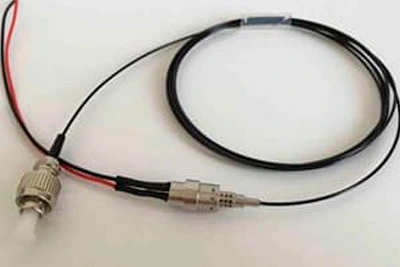Connection technology is used in almost every industry, so the cost, connection performance and volume requirements drive the development of related technologies. Microwelding technology provides excellent joint integrity, long service life and good electrical conductivity.
Copper is a typical alternative material that can be microwelded to connect conductive parts because of its superior ability to efficiently conduct electrical energy and transmit signals. However, as a good choice of conductor, copper has very high heat conduction performance, which will quickly diffuse heat from the welding joint, making it difficult to maintain heat balance and reliable welding, which makes the characteristics of rapid heat conduction of copper become a difficult problem in micro welding. How to control the heat balance of these small and highly conductive components without overheating or underheating? One way to solve this problem is to use 532nm, or green light wavelength. Advantages and disadvantages of traditional microwelding techniques Microwelding can be accomplished in several ways: ultrasonic welding, resistance welding, and laser welding. Each welding has its own advantages and disadvantages, and each welding can meet the requirements of microwelding to some extent.

This welding method is very suitable for plate welding, but it will reduce the production speed. Ultrasonic welding uses vibration energy to weld the interface. The vibration energy transmitted to the interface is provided by the ultrasonic generator or welding head touching the top part. The joints vibrate hundreds of times per second, with motion amplitudes ranging from 0.0005 to 0.004 inches. The underside of the component is supported by a base anvil, which can be static or vibrating. Vibration under applied force causes plastic deformation of uneven surfaces at the welding interface, resulting in highly close contact and metal atom diffusion. The joint is formed by diffusion and there is no melting at the joint. Some deformation or thinning occurs, but can be controlled normally. The contact between the welding head and parts is maintained by the friction of the welding head, and the friction is strengthened by the embossing pattern of the welding head. Ultrasonic welding is particularly suitable for thin plate welding of conductive parts, including aluminum and copper. Ultrasonic wave technology has some disadvantages in micro welding. Because of the need to transfer force to the parts, mechanical contact is required on both sides of the connection. In addition, the welding head is a loss of inspection and replacement requirements. The joint geometry is limited to a certain extent to lap welds. Finally, the welding cycle speed will reduce the production speed due to the welding head drive.
Resistance welding is flexible, but not suitable for mechanical precision parts. Resistance welding uses high resistance at the welding interface to generate heat as electric current flows through the part. The current is generated on the same or opposite side of the workpiece touching the electrode of the component, forming a loop. Apply some force to the parts to ensure electrical contact. When welding conductive parts using resistance welding, the electrodes have resistance and thus perform two functions: heating and conducting heat to the parts, and conducting sufficient current to generate some heat at the connection interface. Resistance welding is suitable for a wide range of joint applications and materials with excellent performance. However, because the resistance welding process relies on mechanical contact and requires the formation of an electrical circuit between two electrodes, it cannot be performed in all cases, especially for mechanical precision parts. In addition, the minimum electrode diameter is approximately 0.04 in., which limits the proximity operation of the connection.

